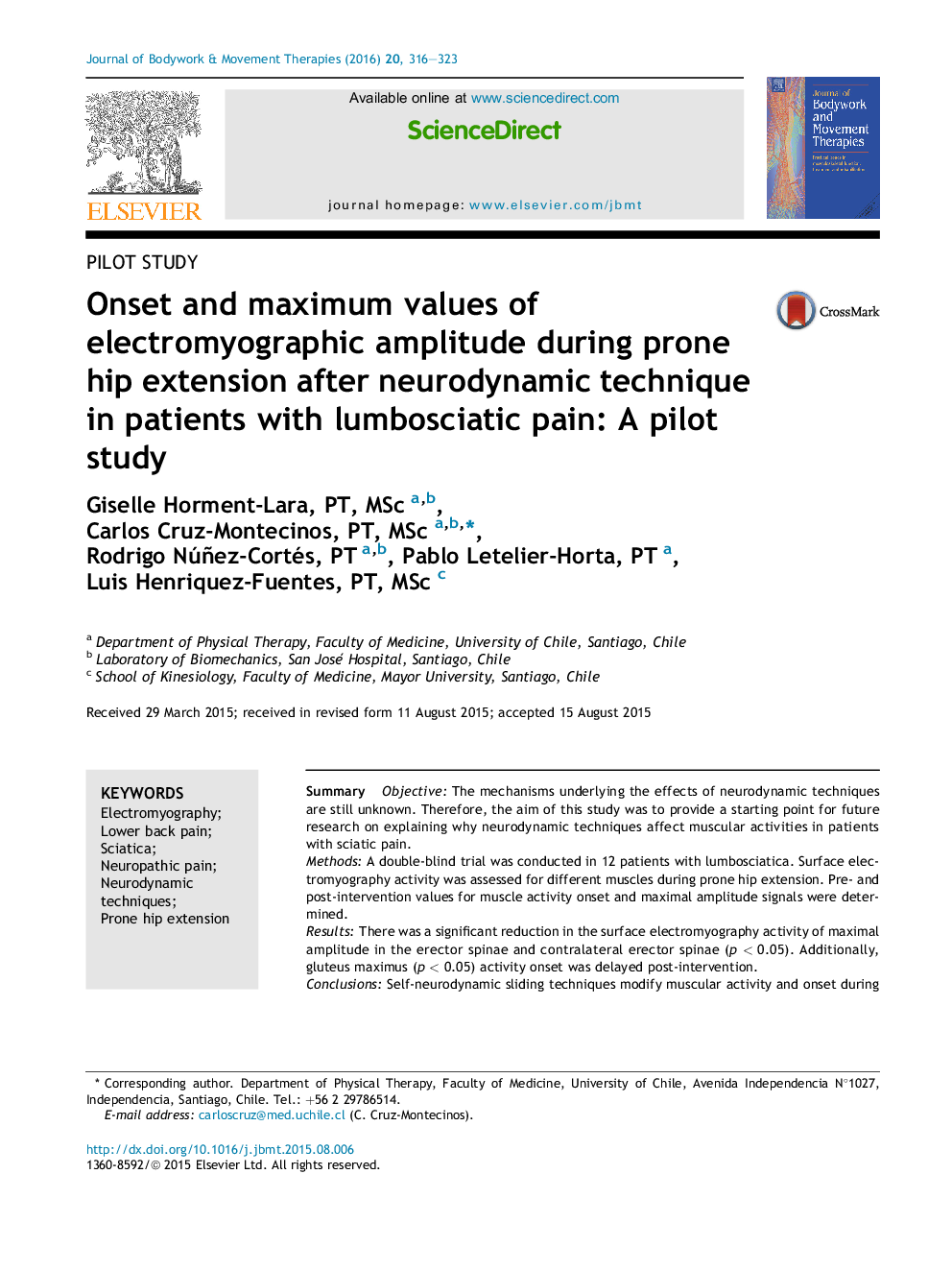| Article ID | Journal | Published Year | Pages | File Type |
|---|---|---|---|---|
| 2618588 | Journal of Bodywork and Movement Therapies | 2016 | 8 Pages |
SummaryObjectiveThe mechanisms underlying the effects of neurodynamic techniques are still unknown. Therefore, the aim of this study was to provide a starting point for future research on explaining why neurodynamic techniques affect muscular activities in patients with sciatic pain.MethodsA double-blind trial was conducted in 12 patients with lumbosciatica. Surface electromyography activity was assessed for different muscles during prone hip extension. Pre- and post-intervention values for muscle activity onset and maximal amplitude signals were determined.ResultsThere was a significant reduction in the surface electromyography activity of maximal amplitude in the erector spinae and contralateral erector spinae (p < 0.05). Additionally, gluteus maximus (p < 0.05) activity onset was delayed post-intervention.ConclusionsSelf-neurodynamic sliding techniques modify muscular activity and onset during prone hip extension, possibly reducing unnecessary adaptations for protecting injured components. Future work will analyze the effects of self-neurodynamic sliding techniques during other physical tasks.
